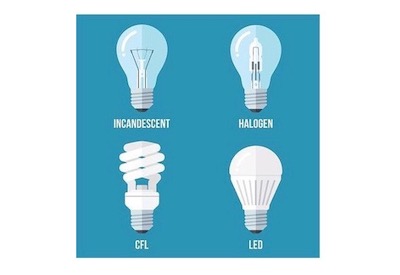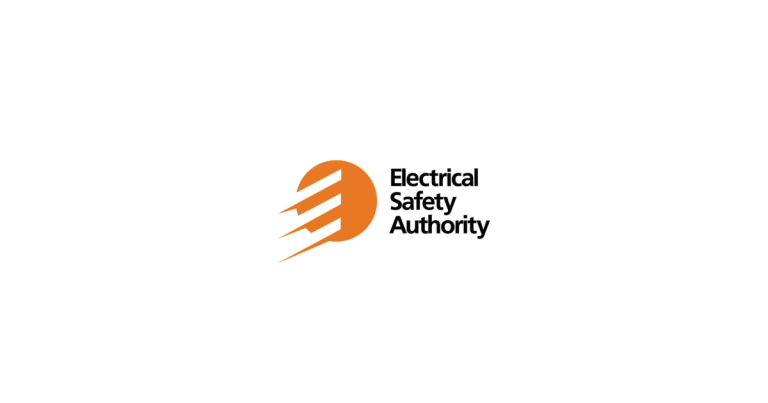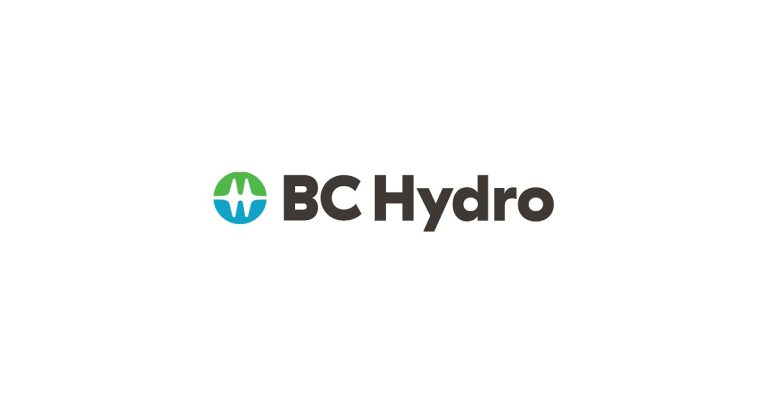LEDs 101: A Conversation with the Experts

September 14, 2020
By Lynn Belken and Katy McSurdy
In a recent blog about conducting your own energy audit (during COVID-19 stay in place orders) we shared some lighting efficiency tips and suggested consumers buy and install light-emitting diodes, or LEDs, to help cut down on energy costs. But buying light bulbs isn’t as simple as it used to be. There are more lighting options than ever before, and we are here to help.
As you stroll down the lighting aisle at your local hardware store (or with social distancing in place… scroll down the lighting page of their website), how do you know which one is the right one for you? How do you know the bulb you’re buying is going to be bright enough? What about colour temperature? Lumens? And all the different types of bulbs available?
The first option you’ll be faced with is the type of bulb you want to purchase. The types of bulbs you are likely to encounter include incandescent bulbs, halogens, CFLs, and LEDs. Let’s briefly review these bulb types.
Incandescent light bulbs were invented over 100 years ago. They work by incandescence, which is produced by heating a filament until it glows and emits light.
Halogen bulbs are essentially an enhanced version of incandescent. Just like with incandescent light bulbs, the electrical current enters the socket and travels up to the filament, heating it to produce light.
In CFLs, an electric current is driven through a tube containing argon and a small amount of mercury vapor. This causes the mercury atoms to bounce around the inside of the tube, which generates ultraviolet light that we can’t see. The ultraviolet light causes the phosphor coating on the inside to glow, which produces the light we actually see. They use about 70% less energy than incandescent bulbs.
LEDs are amazing products. They are a solid-state technology which uses a semiconductor (microchip) that emits light when current is passed through it. LEDs produce a very directional light that can be aimed in the general direction you want the light to go, and further controlled using lenses and reflectors to really focus light to where it is needed. By using LEDs in applications where you can point the light where you need it, you gain efficiency because there is less light trapped inside the fixture. LEDs use 75% – 90% less energy than incandescent lighting.
Now that you’ve got a better understanding of the different bulb types on the shelf, let’s dive a bit deeper. We recently spoke with Liesel Whitney-Schulte, Director of Programs at DesignLights Consortium (DLC), to clear up some misconceptions and get a better understanding of the history of LEDs, so that you can buy the right light bulb for your needs and be happy with your purchase.
LB: How did LEDs first develop?
LW-S: Single colour LED was first used for indicator lights, (such as the green LED on a laptop that indicates it is on), exit signs, traffic signals, taillights, and refrigerated case lights. One of the best early implementations was used in recessed downlights (also called recessed “can” lights) where the light is focused in a specific direction. LEDs are inherently directional, so less optics are required (compared to CFLs) to get the light out of the fixture and to where it is needed.
LB: What role have utilities and energy programs played in the adoption of LEDs?
LW-S: Utility and energy programs have promoted the technology by providing rebates and/or instant incentives to buy down the cost and make LEDs more affordable. As broad scale adoption has happened, costs have continued to go down and now programs are looking to utilize the inherently dimmable nature of LED to implement controls so that lights are used only when and where they are needed.
LB: What are some of the challenges that LEDs have been facing?
LW-S: Many people mistakenly believe that LEDs don’t produce heat, because the light surface is often not hot to the touch — but the back of the lamp or light fixture is. Operating LEDs in an environment where the temperature is above 90 degrees or using them in applications that have rapid on/off cycles, can cause early failures/shorten the useful life of LEDs. There are also special LEDs rated for damp use, like in a recessed fixture above a shower. Regular LEDs must have air movement or ventilation, or they may overheat and get damaged.
LB: How do consumers know they are buying a quality product?
LW-S: Look at the labels. The FTC lighting facts label lists brightness (light output) and CCT (colour appearance) on the label. Try to find a colour rendering index (CRI) of over 80 on the box, and pick an ENERGY STAR lamp for confidence in the product performance.
LB: What about colour temperature?
LW-S: CCT is Correlated Colour Temperature and indicates the colour appearance of the light. For a lamp consider this: Is it warm like candlelight or a sunset? That is 2000 -2500 Kelvin. Is it bright bluish-white like the sky? That is considered cool white or daylight colour and typically 5000-6500 K. In-between is more neutral white and what we are used to in an office between 3500- 4500 K.
I like warmer colour light in bedrooms, bathrooms and living spaces, but cooler CCT like 5000K can be better for visual acuity in places like laundry rooms where you want to clearly see spots on fabrics, or anywhere that you better visual acuity for tasks like sewing, wiring or soldering, reading, etc.
LB: How do you know the bulb you’re buying is going to be bright enough (or not too bright)?
LW-S: Try to match the lumen output with what you are replacing. You can find this on the label on the box for both lamp types. Often the LED bulb will show an equivalence to an incandescent.
LB: We’d also like to address some consumer concerns like choosing the right brand, dimming features, and what to do about buzzing issues.
LW-S: Buy from a company you can trust — name brands matter and they are more likely to honour warranties. Keep your receipts. Look up the products on qualified product lists, like Designlights Consortium for non-residential and ENERGY STAR for consumer lamps to ensure that the products have been tested and the performance has been verified.
There are lamps on the market that dim down to less than 10% which is still a lot of light compared to a dimmed incandescent. If a really low light level is desired, then look for a product that dims to 1%. It sounds low, but the human eye is amazing at adaptation to different light conditions.
LED lights shouldn’t buzz. It may be incompatible with a dimmer or be defective. Take it back to the store. For business lighting, the contractor or manufacturer should be able to troubleshoot flicker or any other issues with the lights. Keep your receipts!
LB: What are the benefits of smart bulbs? Why would consumers want to consider using them in their homes?
LW-S: Smart lights can be tied into other smart devices and be programmed to turn off when you are not home and on before or when you arrive. They can also be programmed to react to specific conditions by changing colour or flashing in response to changes in weather, exterior cameras, timers to indicate when laundry is done, filters needing replacement, change colour with tv shows or gaming, and in the future hold promise to be used to direct emergency services if needed. All of these things require additional connection to other devices or services.
There’s a long-lasting energy efficient LED bulb for every fixture in your home. And you can go beyond simply replacing bulbs. Some fixtures, including certain models of ceiling fans and recessed downlights have integrated LED lighting. LED technology is also found in some flexible light strips or tape that can be used as under-cabinet lights, and for strings of holiday lights.
*****
From our work in energy efficiency programs, we know first hand that LED lighting upgrades can make a huge difference in decreasing energy consumption and energy bills. Energy efficiency is one of the lowest cost energy resources — it costs less to save energy than it does to generate the same energy from other means. The simple act of changing light bulbs on a large scale affects air pollution and public health, as well as electricity prices and the economy. We hope this conversation “sheds some light” on your choices at the store and why you should consider LEDs first. Happy shopping — and remember to keep those receipts.
Lynn Belken is A Senior Marketing Account Representative for Nexant. Katy McSurdy is a Content Marketing Strategist, also with Nexant. This article was first published as a Nexant blog: www.nexant.com/resources/leds-101-conversation-experts.




![Guide to the Canadian Electrical Code, Part 1[i] – A Road Map: Section 52 — Diagnostic imaging installations](https://electricalindustry.ca/wp-content/uploads/2022/11/Guide-CE-Code-2-768x432.png)





![Guide to the Canadian Electrical Code, Part 1[i] – A Road Map: Section 52 — Diagnostic imaging installations](https://electricalindustry.ca/wp-content/uploads/2022/11/Guide-CE-Code-2.png)






